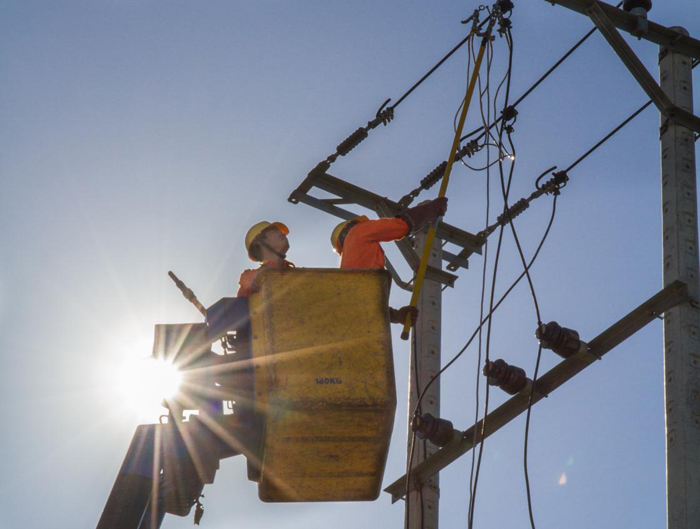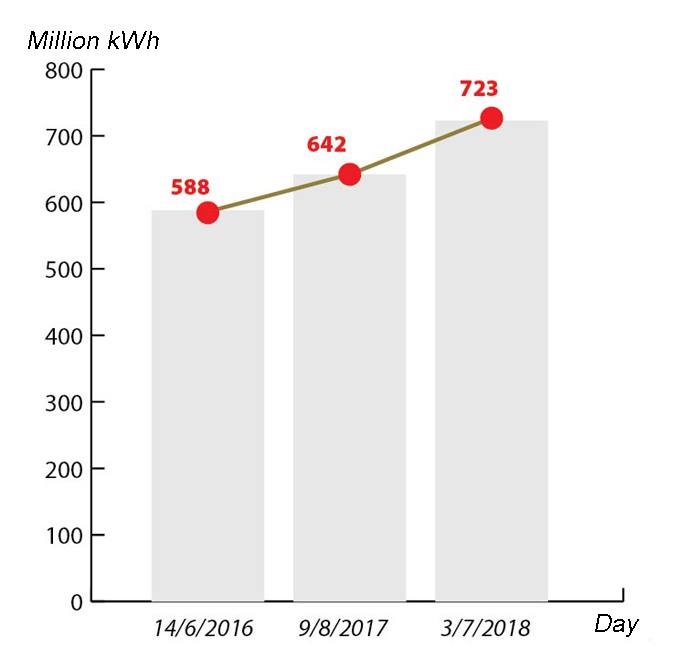This is the second scorching heat wave in 2018. On July 3, 2018, the peak capacity of the whole system reached 35,110 MW, the electricity consumption was 723.9 million kWh accordingly. Compared with the highest power consumption day in the first heat wave (June 22, 2018), the peak capacity and the generation output have increased by 972 MW and approximately 13 million kWh, respectively.
The prolonged scorching heat wave has caused electricity consumption to increase constantly day by day, mainly by the use of air conditioning and cooling equipment. Across 27 provinces and cities in the North, only in one day, peak capacity and electricity consumption sharply climbed from 16,665 MW and 345 million kWh (on July 2, 2018) to 17,063 MW and 358.6 million kWh (on July 3, 2018), respectively. Hanoi also recorded the highest ever consumption amount of 82 million kWh on July 3, 2018.

Due to the scorching hot weather, working environment of electric workers could endure nearly 50 degrees Celsius - Photo: Dang De
Over the past days, member organizations under Vietnam Electricity (EVN) have been strengthening their workforce 24/24 hours a day, regularly checking substations and power lines; always ready to work anytime no matter in scorching hot and sunny daytime or late at night, to recover power supply to customers as quickly as possible in cases of local power outages due to overload.
Talking with evn.com.vn in the afternoon of July 4, 2018, Mr. Le Thanh Binh - Director of Thanh Hoa City Power Company said that during the past days the Company had to rotate capacity among 110 kV substations supplying electricity to the city so as to meet abnormal fluctuations of electricity demand in different areas.
In Ha Tinh, the burning heat and Lao winds have made peak hours of electricity consumption at night last from 22 pm to 3 am (normal peak hours of a day usually from 20 pm to 22 pm), especially in cities and towns. As a result, overnight working shifts have been deployed during this heat wave.
The National Centre for Hydro-Meteorological Forecasting forecasts that the scorching heat wave will go on in the coming days. Therefore, the collaboration of agencies, offices and citizens in safe and economical use of electricity is indispensible to relieve pressure on the power system.
Accordingly, energy intensive electrical equipment should not be used simultaneously; particularly air conditioners should be set in optimum modes, preferably at 26 degrees Celsius upwards, so as to both save energy and reduce risks of local overload of the grid.
The efficient and economical use of electricity in scorching hot days will enable customers to control risks of electricity bill spike.

Electricity consumption demand due to hot weather in the country has been rising steadily over the years (the highest daily consumption data from 2016 to July 3, 2018)